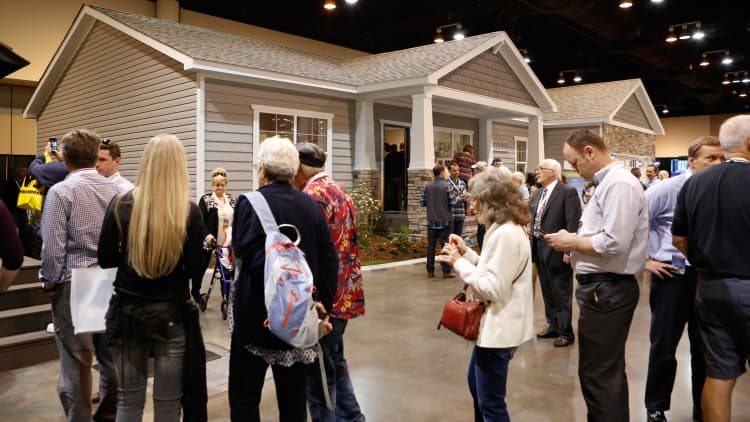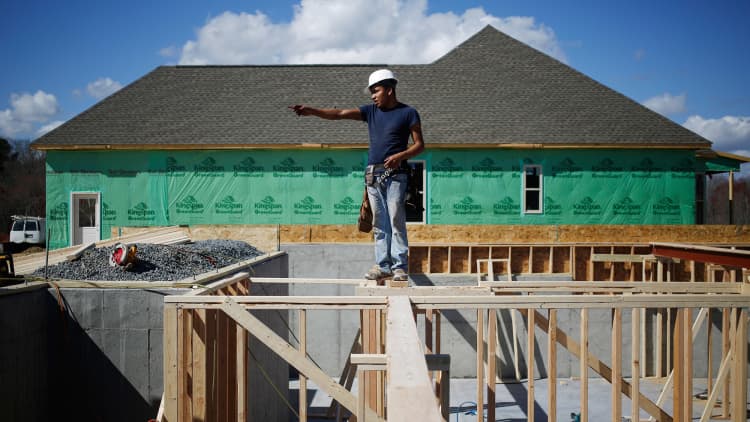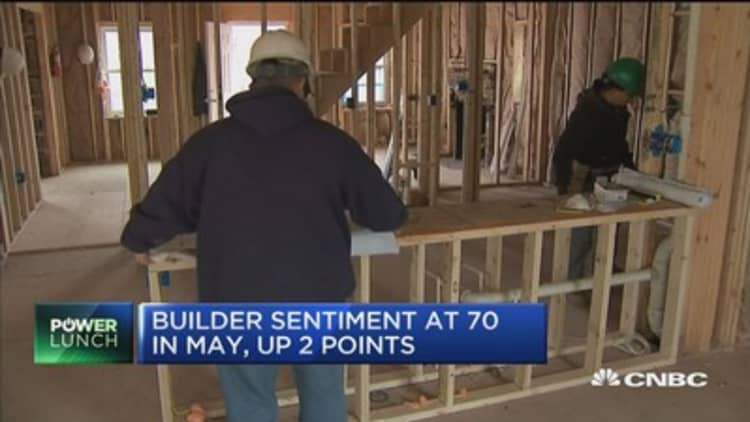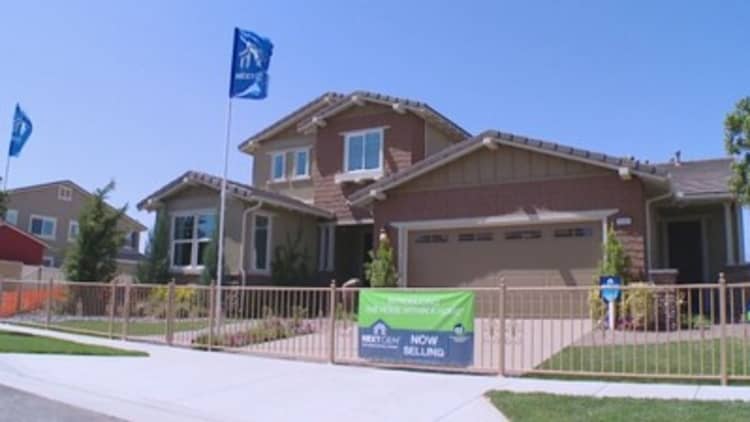
The largest generation is finally starting to buy houses. The trouble is, there aren't enough houses for sale to feed their appetite, at least not enough they can afford.
Enter the nation's recovering homebuilders. They may want to play to this great big audience, but doing that will hurt their bottom lines.
"Since the recovery has really been at the middle end of the market, home prices have gone up and land prices have followed," said Megan McGrath, managing director at MKM Partners. "So it is very, very hard to make a good profit at a lower price point these days."
In the wake of the Great Recession, investors both small and institutional swooped in and bought hundreds of thousands of foreclosed properties. The vast majority of those were originally lower-priced so-called starter homes. Some of them were barely a few years old, thanks to the massive boom in construction. Rather than sell them when home prices recovered, investors held onto them, turning them into still lucrative single-family rentals. As a result, there are very few existing starter homes for sale today.

The median price of a newly built home in March was $315,000, significantly higher than the $236,400 median for existing homes. Newly built homes always come at a price premium, but that spread widened significantly during the housing
"I don't think anyone's doing jumping jacks in terms of that lower end of the market, but I do think you're also seeing ... a little slowdown at that middle end, because that's where the bulk of the recovery has been so far. And so we've seen a lot of sales so far in the last four years in that
New homes, lower prices
Big builders are slowly starting to introduce new product lines at lower price points, but they're by no means starter homes. Only D.R. Horton, which introduced its Express Homes line in 2014 to much criticism, and LGI Homes, have substantial entry-level product.
"Finally they are selling well, so you are seeing everybody start to migrate to those types of homes, but they're starting," said John Burns, CEO of John Burns Real Estate Consulting. "People are doing more townhomes in good locations, and they're also stripping stuff out of the house to get the price cheaper."
In 2015, NVR introduced its "Simply Ryan" brand, and MDC followed with "Seasons," both lower-priced, but not entry-level priced homes. In 2016, Tri Pointe, Meritage, and The New Home Co. introduced lower-priced products. Even luxury brand Toll Brothers and M/I Homes, whose logo is, "Move Up," jumped on the bandwagon, but while the prices are lower, they are not true entry level.
It's always a tug of war in builders between order growth and gross margins. Those are the two things that investors pay the most attention to. That really tends to be what drives the stocks.Megan McGrathmanaging director, MKM Partners
"For each builder, that price could be $75,000 higher than an LGI home," said Burns.
Builders may want to capture starter-home demand, but they know that will come at a cost to their bottom lines.
"It's always a tug of war in builders between order growth and gross margins. Those are the two things that investors pay the most attention to. That really tends to be what drives the stocks," said McGrath.
The only way for builders to lower prices and take that hit to margins is to see big growth in new orders for new homes. So far, we are not seeing that.

"Right now we're probably on average in the high single digits for most homebuilders. If you're going to see more gross margin deterioration, I think the market is going to want to see that rise into at least the low double digits going forward," said McGrath.
The potential is there, as demand is clearly growing among younger buyers.
First-time buyers, however, are not necessarily starter homebuyers. Millennials waited longer to get married, have children and buy homes, due to the recession and other social factors. Since they are older, they can afford more, even though it may be their first home.
"There are a lot of first-time buyers in their early 30's in good locations, buying," noted Burns. "It's somebody's first house, but they both went to college, and they're making $200,000 each."
Buyer demand is also not as strong as demographics would suggest. Current renters are not moving out to buy homes in droves.
Builders have been increasing overall production slowly and carefully, but single-family construction is still 18 percent below its 25-year average.
Watch: Home builders struggle to provide homes to millennials



